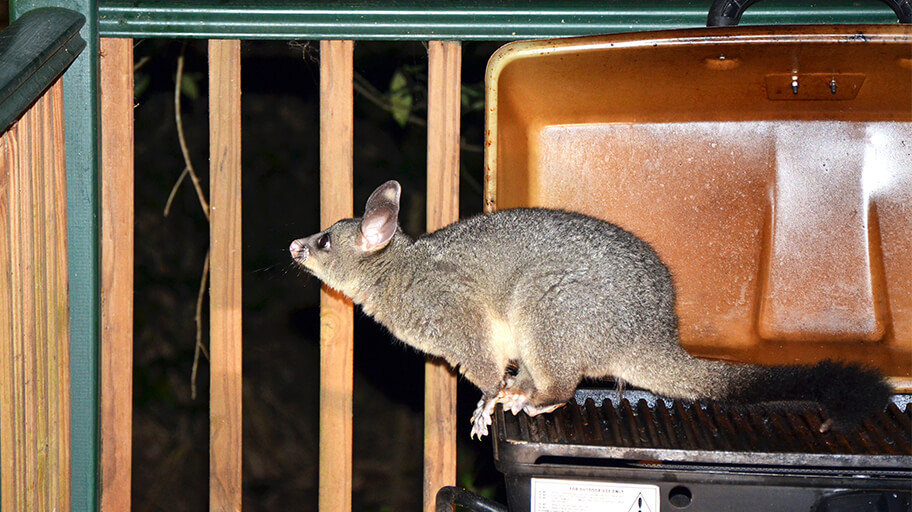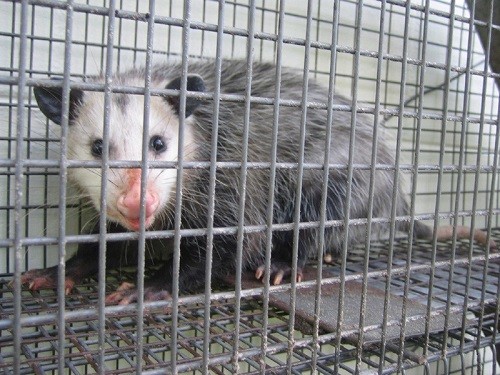How to Get Rid of Possums? Make Them Leave in a Natural Way
Scratch, scratch, scratch. Something in the attic is trying to get your attention. Now that your curiosity is up, you need to know who’s the uninvited visitor. You slowly enter and what do you see? A mess, chewed belongings and sometimes even the furry burglar in the act – the possum itself
The main culprits are usually one of the two species of possums: the common brushtail possum – as large as a cat with a big bushy tail, and the common ringtail possum – smaller in size with a bare curled tail. Both of them are adorable little critters but don’t be fooled by their big innocent eyes! They can cause a lot of problems in a household.
Why you should get rid of possums as fast as you can:
Diseases – They can carry diseases like Buruli ulcer and Tularemia and spread them through urine, droppings and fleas;
Fleas – Possible flea carriers and potential danger for your pets and kids even without the infectious diseases;
Stress for the pets around the house – The possums invade their territory and make constant noises at night which drives pets crazy;
Property damage – They can chew cardboard, insulation, electrical cables and munch on your garden plants.
Signs of a possum infestation
Of course, the fastest way to find out you have a possum problem at home is either to see one face-to-snout or catch it with a surveillance camera. If you only suspect there’s a possum around, you need to do a little bit of investigation. It’s important to identify the animal as it can be a pest like a rat or a mouse. That will determine what measures you need to take
Signs of possums to look out for:
Noises – They’re noisy little fellas. They can be vocal and growl, grunt, screech and hiss. Other noises they make come from scratching and knocking things down at night (when they’re most active), usually in roof cavities;
Droppings and urine – You can find possum droppings and urine stains. The brushtail possum’s droppings are from dark green to brown and with the size of an olive. The ringtail possum’s droppings are from dark brown to black and around 1 cm long. You can find them in different places – on the balcony, in the guttering, on garden tables, etc. It’s hard to find the difference between possum and rat droppings but in case you find either, you might want to call a pest control company right away;
Chewed electrical wiring – Like any rodents, possums love chewing on things that they shouldn’t. You definitely have a rodent problem if you find chewed electrical cables. This can create a fire hazard and your household might end up with no electricity;
Trees and flower damage in the garden – Possums love munching on plants, even decorative ones. The problem is even more apparent if you have fruit trees in your garden.

Best Ways To Get Rid Of Possums And Other Pests
The Best Ways to Get Rid of Possums Depending on where you live, pests are inevitable. When they are attacking your crops, you need to act fast. Below are some of the best ways to get rid of possums and other menaces. It’s important to be self-sufficient. Cultivating crops makes you less dependent on others.
They also have a strong scent. They can do serious damage to a garden. You will need to assess whether the damage has been done by possums or whether something else is after the crops. One way to make sure that the culprit are possums is by measuring the hole they created as they need at least 3 inches to squeeze into it.
How to protect crops from possums
Possums need to be controlled because they can eat over 65 types of plants. They can completely destroy a farm full of crops in a matter of a few days. They don’t need much to survive; a nesting place is enough as long as they have access to food. You will find their nests in hollow logs, under masses of vegetation, or in trees.
Some people have tried installing a two-strand electric fence that has wires at 4 inches and at 12 inches. This would help to not only protect the crop against possum but it would also protect the crops from damage caused by other pests. Poly tape also works well for this purpose. An electrical fence usually activates at dusk and remains on until dawn.
Trapping Possums
Sometimes you have to resort to catching possums and relocating them. This is the most economically friendly way and the most effective method as well. However, it requires daily commitment as you will have to put food in the traps and check in often. The minimum sized box for catching a possum should be 10 x 10 x 32 for traps that have single doors.

How to get rid of possums from your home
Few things are as startling as a possum thundering across the roof in the middle of the night. They’re surprisingly loud for a creature of slight proportions. While possums are cute and mostly non-aggressive, they can wreak havoc around your home and garden as well as carry and spread diseases.
Signs you have a possum problem
If you’ve heard scampering across the ceiling or in the walls during the night, chances are you have a possum or a rat in your home. Identification of the unwelcome visitor is key to determining the most appropriate action. Droppings are the best indicator as to whether the pest in your roof or wall cavity is a possum or a rat.
Cruelty-free ways to remove or repel possums
Possums are a protected species which means it’s illegal to harm or kill them, and remove them without a permit. Relocation may seem like a cruelty-free way to remove a possum from your home, but because possums are extremely territorial relocation will most likely result in the demise of the animal.
Fence them out
While possums are agile creatures and great climbers, they can only jump up to 1m high. This means a sturdy paling fence over 1.5m high can prevent possums getting into your garden. If you have a lower fence you could install fence spikes on the top of the fence to deter possums (as well as cats and rodents) without harming them
Remove access to food and water
As the saying goes ‘prevention is better than cure’, so by making your home less appealing to possums it is a great way to deter them. Start by removing access to food and water on your property.

Opossums
What is an Opossum?
Opossums are the only marsupial found in North America. They live in many parts of the United States with the exception of the Rockies, western plains and parts of the northern region. Opossums usually live alone and are only active at night. Though a relative of the kangaroo,
opossums are much slower and produce a nauseating smell when threatened. These wild animals are able to survive in a wide range of conditions and locations by virtue of their flexible diets and reproductive habits. If you are dealing with an infestation, opossum removal should be handled by a professional.
What Do Opossums Look Like?
Opossums grow up to 40 inches in length, about the size of a house cat. Their bodies are covered in white or grayish hair. Opossums have a long, pointed face with round, hairless ears and a rat-like tail. Additionally, females have a pouch on their stomach for holding newborns.
Opossum vs. Possum
Although the average person may use the terms “opossum” and “possum” interchangeably, they are different. An opossum is a white and gray marsupial that is found primarily in North America. In contrast, a possum is the name used to describe a marsupial
Opossum Removal
In order to prevent an opossum from taking up shelter in a residence, homeowners should store trash in sealed receptacles with animal-proof lids, preferably in a locked shed or outhouse. It’s good practice to bring pet food dishes inside at night to avoid attracting opossums and other nuisance wildlife. Homeowners should also remove other obvious sources of food and shelter from the property, such as fallen berries and fruits, as well as woodpiles and logs. On a nice day, Inspect the outside of the home for holes and access points, such as broken vent covers. To further limit opossum accessibility to a home, tree branches hanging near roofing should be trimmed, as opossums are skilled climbers and leapers.
How to keep raccoons and possums away from your house
Major cities are being overrun by raccoons, but the “trash panda” isn’t the only invader. As opossums, skunks, and other furry pests make homes in our neighborhoods, it’s important to know how we can respect nature without letting it ruin our yards.
What attracts raccoons and other fuzzy nuisances?
Animals adapt to human-created habitats through a process called urbanization. As it turns out, some mammals benefit from our tendency to replace everything with a strip mall.
found raccoons were uniquely suited to living in cities. In fact, city life might actually be better for them. Think about it: humans arrive, kill or drive off big predators, install sources of clean water like sprinklers and hose spigots, and leave out bins of food. We even build culverts that help critters avoid roads. Some crafty animals have been known to build dens in the space under houses. In fact, raccoons are living so high on the hog that we’re giving them diabetes.
How to keep raccoons, possums, and other furry pests away
Wild animals are generally drawn to humans because it’s the path of least resistance to food, water, and shelter. Make these harder to get and they’ll leave on their own.
Most pest mammals will eat almost anything, so start by firmly securing any trash or compost bin. Use “animal-proof” containers and be sure to regularly remove rubbish, especially scraps of food. Bring in any dog or cat food you might leave out during the day and ensure your pets stay inside after dark—you don’t want them to become food themselves. If you have food sources you can’t bring in, such as bird feeders, hang them high enough so that they’re difficult to reach from the ground or a branch.